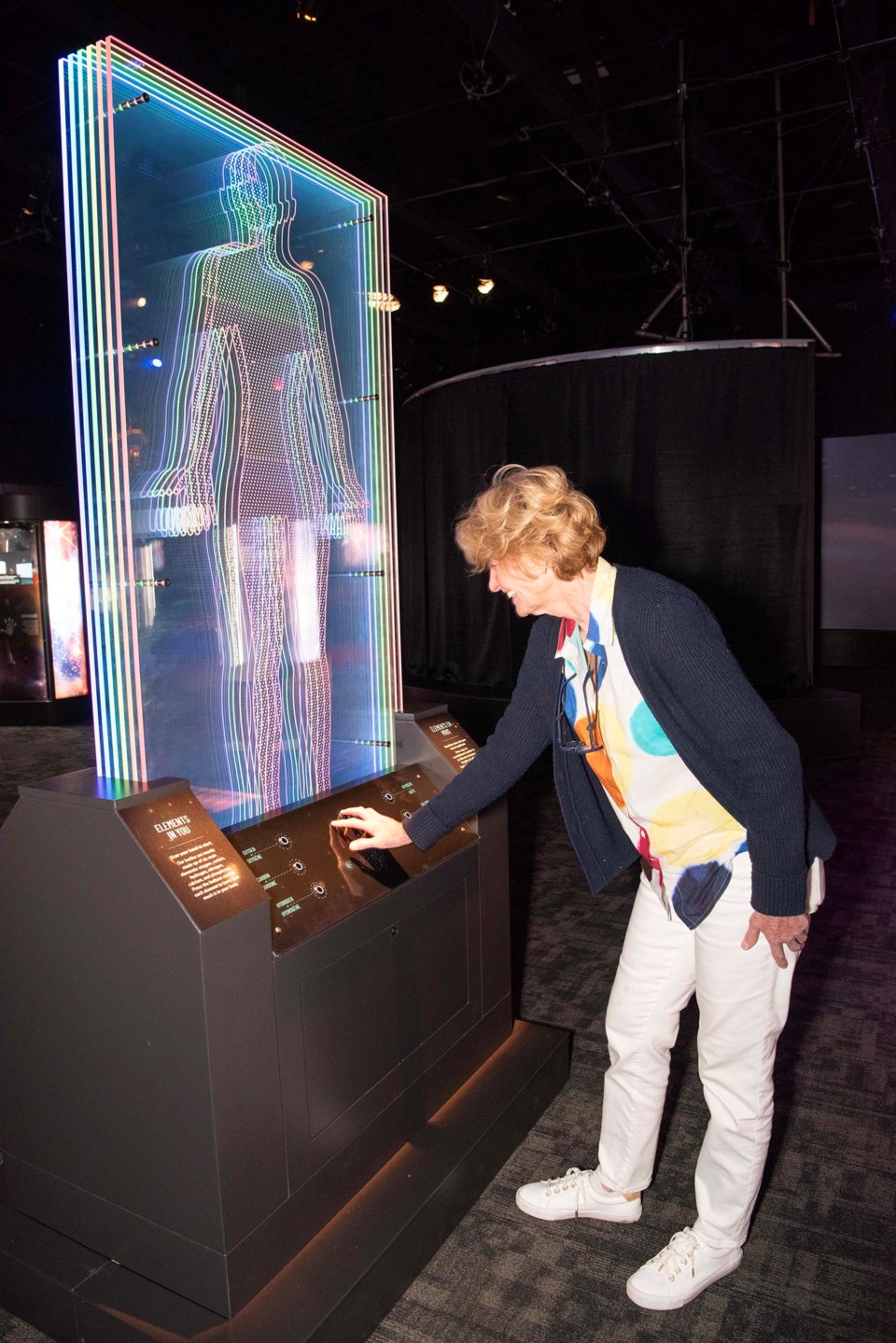St. Albert-area students can now see the secrets of the stars within themselves at a new exhibit that just opened at Edmonton’s space science centre.
About 55 Grade 10 students from Edmonton’s W.P. Wagner School got to check out the world premiere of the Stardust: The Universe in You exhibit at the Telus World of Science Edmonton on May 30. The exhibit opened to the general public May 31.
The exhibit uses interactive displays and spectacular space photography to teach guests about how all matter on Earth came from stars.
“As [American astronomer] Carl Sagan said, we are all star-stuff,” said Frank Florian, senior manager of planetarium and space science at the Telus World of Science Edmonton.
Star-shattering booms
The exhibit was the brainchild of author Carol Gamble, whose book Stardust and You teaches youths about cosmology, supernovae, and stardust.
Gamble, who was at the exhibit’s opening, said she first got interested in cosmology about 30 years ago when she read Brian Swimme’s Hidden Heart of the Cosmos. Then a teacher, she developed a lesson plan to teach her students about space, stars, and the creation of matter.
“It’s kind of the beginning of learning your place in the universe,” she said.
Gamble said she later compiled her lessons into Stardust and You. Seeking ways to bring the book to more people, she teamed up with Jay Brown of Flying Fish Exhibits to turn her book into a travelling exhibit. Brown has close ties with the Telus World of Science Edmonton and suggested it premiere there.
The exhibit features photos and videos of stars, galaxies, and nebulae posted on glowing black obelisks. Activity stations let guests assemble molecules from magnetic atoms, see in infrared like the James Webb telescope, colour a galaxy and see it displayed on a projection screen, and create stars by drumming really hard. Along the way, they can learn about constellations, telescopes, and the Big Bang.
Researchers believe the universe sprang out of nothingness in a colossal kaboom called the Big Bang, Florian explained. The resulting soup of subatomic particles eventually simmered down to form hydrogen (the simplest element), which glommed together to form galaxies, stars, and (from what was left over) planets.
Stars are like chemical factories, Florian explained. They’re so big their own gravity crushes/fuses atoms together to create new elements.
Stars start with fusing hydrogen into helium. This fusion releases a whole lot of energy, the outward pressure from which counterbalances the inward pull of gravity. Stars keep fusing atoms into heavier and heavier elements until they create iron, which actually absorbs energy instead of releasing it when made. That means no more outward pressure and a rapid collapse of the star. This super-compresses matter in the core to create even denser elements, such as gold and uranium.
“The core heats up so greatly that it blows itself apart,” Florian said, resulting in a supernova that scatters the star’s contents across space.
Florian said researchers believe Earth’s sun was formed from the remnants of two supernovas. Earth, in turn, formed from the sun’s leftovers.
“Everything we see in our solar system was born out of this material left behind by supernova explosions.”
Florian said cosmological topics like the ones covered in this exhibit help people understand their history and our common ties with stars.
“The stuff that’s in us was actually made in a star a long time ago.”
Stardust: The Universe in You will be at the Telus World of Science Edmonton until early September. Visit telusworldofscienceedmonton.ca for details.




